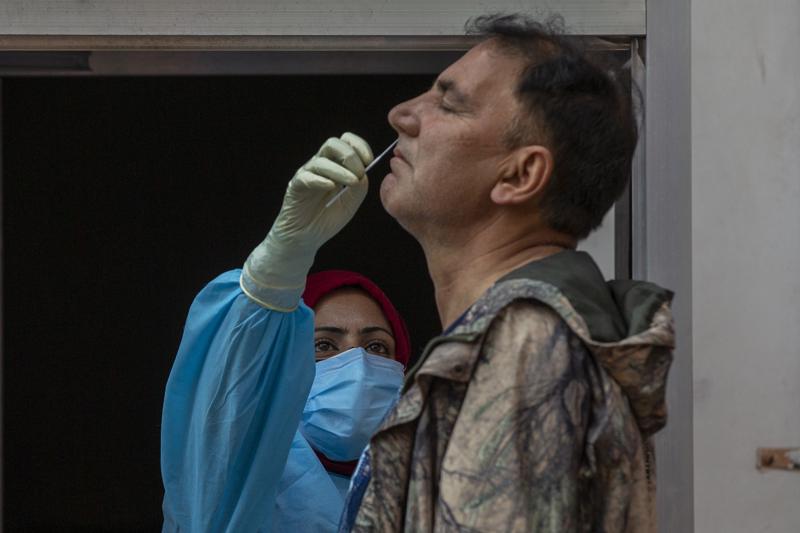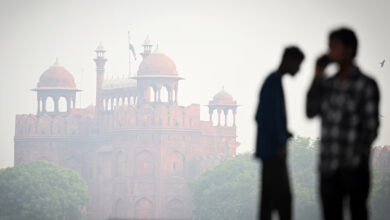
BENGALURU, India (AP) — For the first time in months, Izhaar Hussain Shaikh is feeling somewhat optimistic.
The 30-year-old ambulance driver in India’s metropolis of Mumbai has been working tirelessly ever since the city became the epicenter of another catastrophic COVID-19 surge slashing through the country. Last month, he drove about 70 patients to the hospital, his cellphone constantly vibrating with calls.
But two weeks into May, he’s only carried 10 patients. Cases are falling and so are the phone calls.
“We used to be so busy before, we didn’t even have time to eat,” he said.
In the last week, the number of new cases plunged by nearly 70% in India’s financial capital, home to 22 million people. After a peak of 11,000 daily cases, the city is now seeing fewer than 2,000 a day.
The turnaround represents a glimmer of hope for India, still in the clutches of a devastating coronavirus surge that has raised public anger at the government.
A well-enforced lockdown and vigilant authorities are being credited for Mumbai’s burgeoning success. Even the capital of New Delhi is seeing whispers of improvement as infections slacken after weeks of tragedy and desperation playing out in overcrowded hospitals and crematoriums and on the streets.
With over 24 million confirmed cases and 270,000 deaths, India’s caseload is the second highest after the U.S. But experts believe that the country’s steeply rising curve may finally be flattening — even if the plateau is a high one, with an average of 340,000 confirmed daily cases last week. On Monday, infections continued to decline as cases dipped below 300,000 for the first time in weeks.
It is still too early to say things are improving, with Mumbai and New Delhi representing only a sliver of the overall situation.
For one, drops in the national caseload, however marginal, largely reflect falling infections in a handful of states with big populations and/or high rates of testing. So the nationwide trends represent an incomplete and misleading picture of how things are faring across India as a whole, experts say.
“There will always be smaller states or cities where things are getting worse, but this won’t be as clear in the national caseload numbers,” said Murad Banaji, a mathematician modeling India’s cases.
Given India’s size and population of nearly 1.4 billion, what’s more important to track is a cascade of peaks at different times instead of a single national one, experts said.
“It seems like we are getting desensitized by the numbers, having gotten used to such high ones,” said Bhramar Mukherjee, a University of Michigan biostatistician tracking the virus in India. “But a relative change or drop in overall cases does not diminish the magnitude of the crisis by any means.”
With active cases over 3.6 million, hospitals are still swamped by patients.
Experts also warn that another reason for an apparent peak or plateau in cases could be that the virus has outrun India’s testing capabilities. As the virus jumps from cities to towns to villages, testing has struggled to keep pace, stirring fears that a rural surge is unfurling even as data lags far behind.
Combating the spread in the countryside, where health infrastructure is scarce and where most Indians live, will be the biggest challenge. “The transmission will be slower and lower, but it can still exact a big toll,” said K. Srinath Reddy, president of the Public Health Foundation of India.
Even in big cities, testing has become increasingly harder to access. Labs are inundated and results are taking days, leading many to start treating symptoms before confirming a coronavirus infection. In the last month, cases have more than tripled and reported deaths have gone up six times — but testing has only increased by 1.6 times, said Mukherjee. Meanwhile, vaccinations have plummeted by 40%.
One of the biggest concerns for experts is that India may never know the full death toll from the virus, with fatalities undercounted on such a scale that reporters are finding more answers at crematoriums than official state tallies.
But while authorities previously appeared to struggle to even acknowledge the scale, they’re now taking action. “Before, there just wasn’t a focused attention. But now everyone is focused on containing it as much as possible,” Reddy said.
Hit by a staggering shortage of beds, oxygen and other medical supplies, many states are now adding thousands of beds a week, converting stadiums into COVID-19 hospitals, and procuring as much equipment as possible. States across India are preparing to be hit by another torrent of infections and even courts have intervened to help untangle oxygen supplies.
Aid from overseas, while still facing bureaucratic hurdles, is starting to trickle in. More than 11,000 oxygen concentrators, nearly 13,000 oxygen cylinders and 34 million vials of antivirals have been sent to different states.
Still, help is arriving too slowly in many districts as new infections surface in every single region, even the remote Andaman and Nicobar islands in the Indian Ocean.
Even though Mumbai looks as if it might have turned a corner, surrounding Maharashtra state is still seeing around 40,000 daily cases. “You have a really, really complicated and mixed picture,” said Banaji, the mathematician.
But in at least one Mumbai hospital, “the burden is 30% to 40% less than before,” said Dr. Om Shrivastav, a doctor and member of Maharashtra’s COVID-19 task force.
Already, the city and state are bracing for more infections. A court told Maharashtra this week to continue updating and ramping up measures as authorities look into getting vaccines from abroad to fill a domestic shortage.
“We are making sure we’re not caught napping. In the event this happens again, we’re going to do better,” Shrivastav said.
___
Ghosal reported from New Delhi. Associated Press journalist Rafiq Maqbool in Mumbai, India, contributed.
___
The Associated Press Health and Science Department receives support from the Howard Hughes Medical Institute’s Department of Science Education. The AP is solely responsible for all content.
Image: FILE- In this May 11, 2021 file photo, a health worker takes a nasal swab sample of a Kashmiri man to test for COVID-19 in Srinagar, Indian controlled Kashmir. A dip in the number of coronavirus cases in Mumbai is offering a glimmer of hope for India, which is suffering through a surge of infections. (AP Photo/ Dar Yasin, File)




